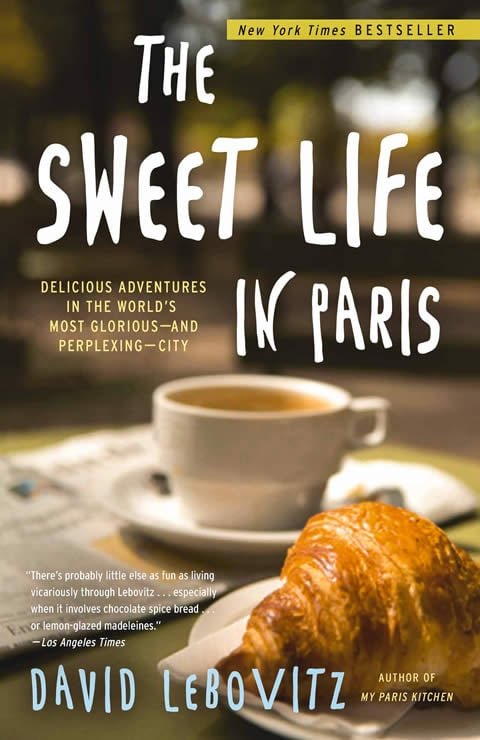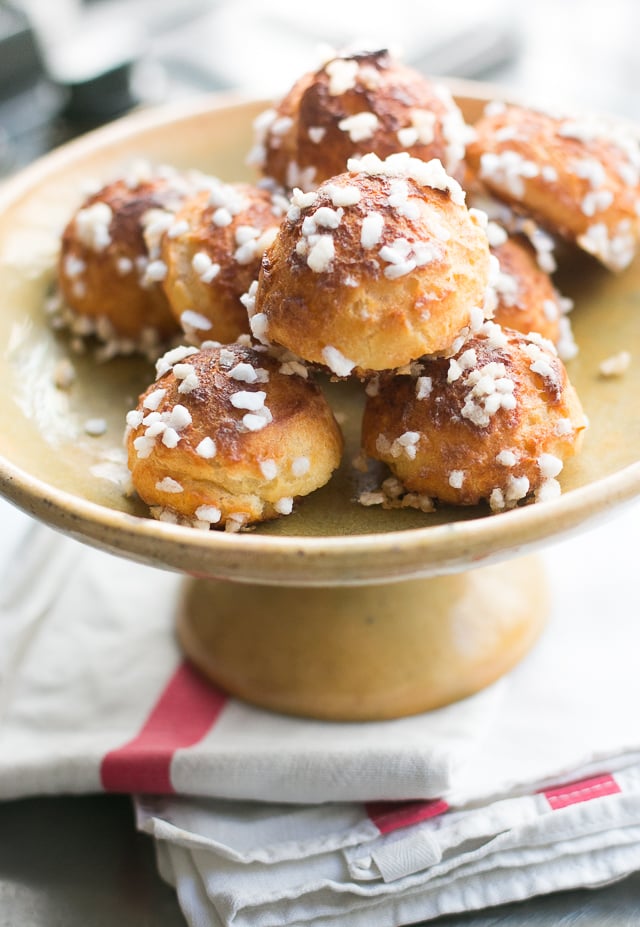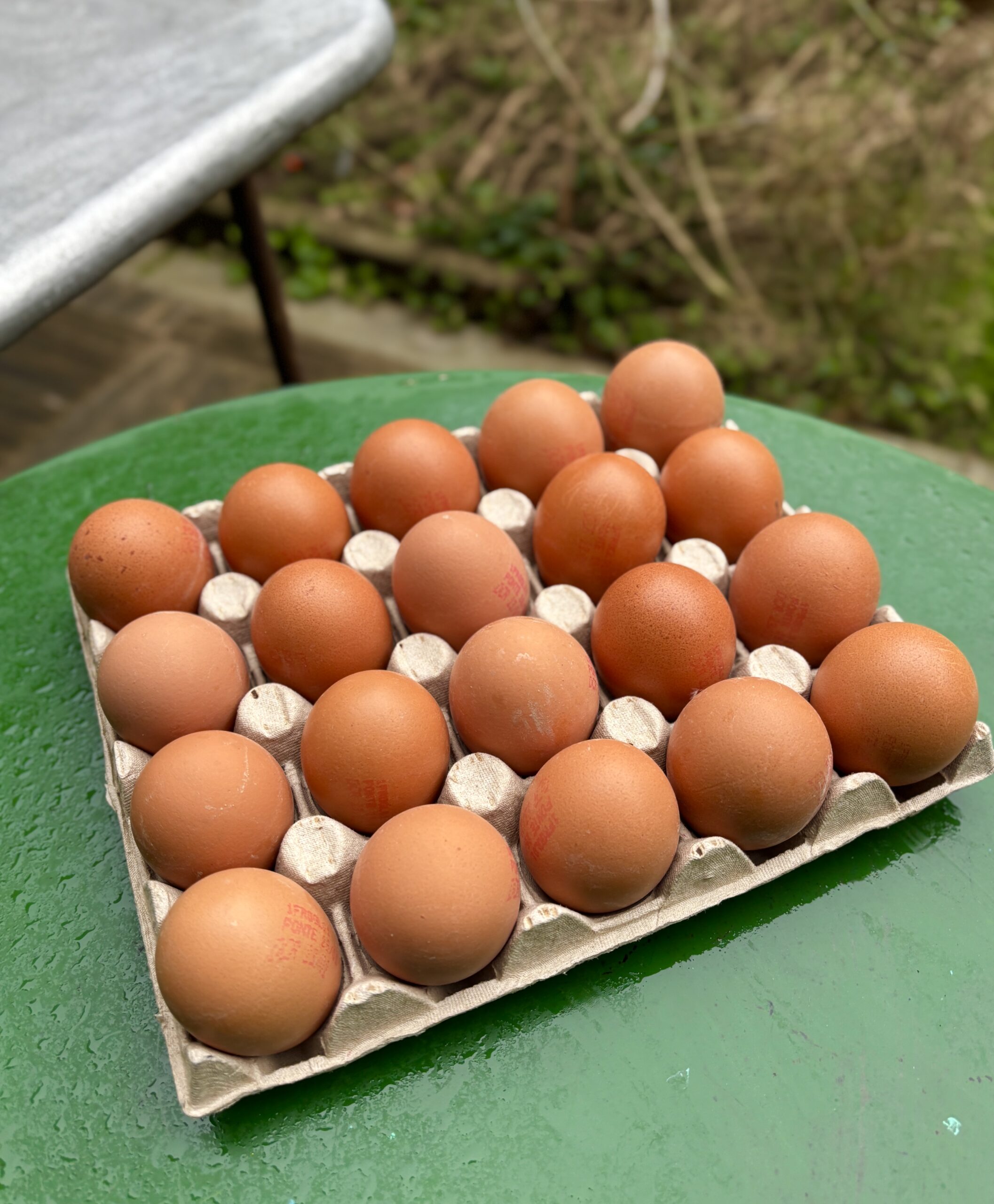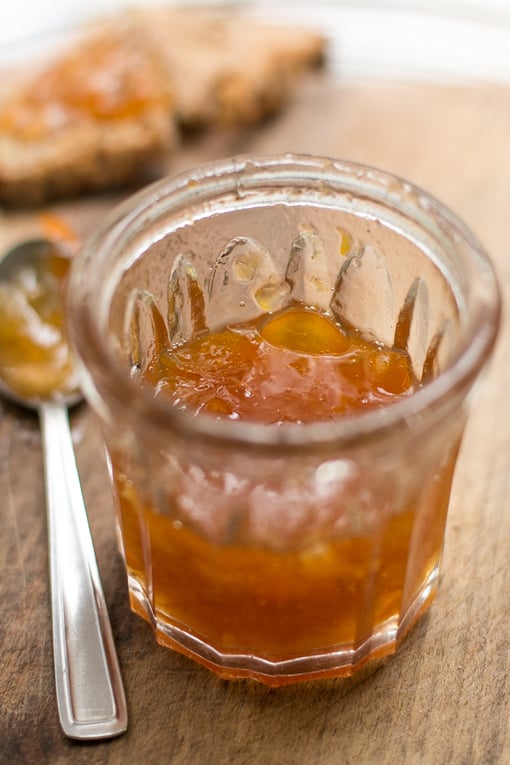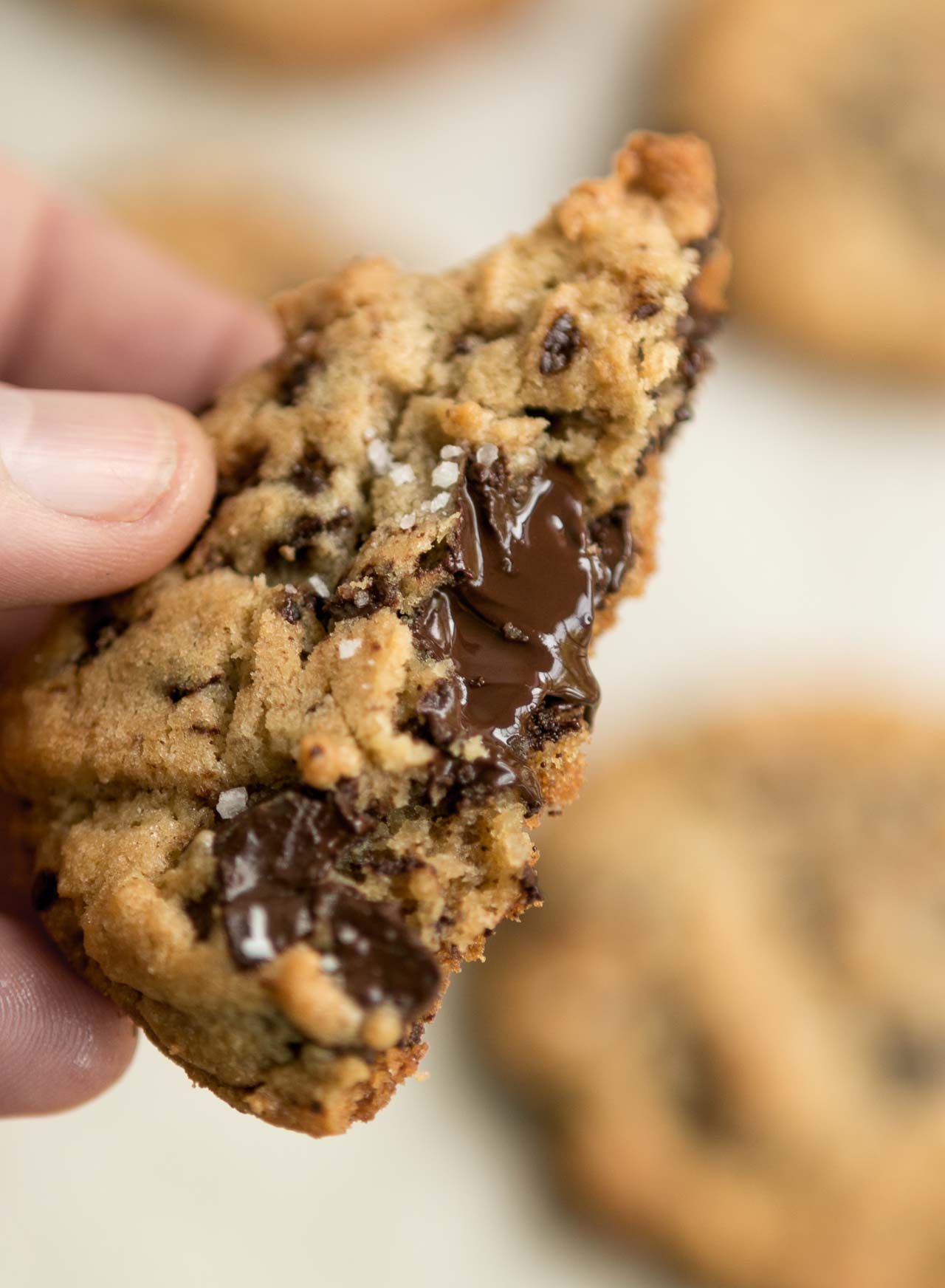Milk from Here
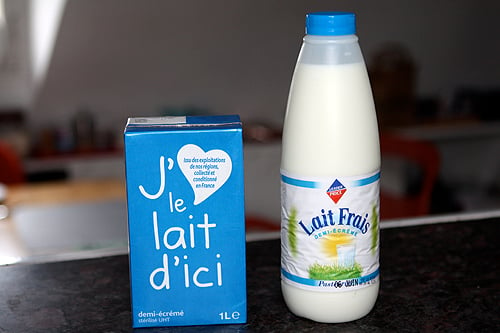
There is an interesting emergence of things that are ‘green’ or écologique, in Paris. Words like commerce, responsable, équitable, éthique, durable and solidaire are being seen on more and more products in supermarkets, and even on some restaurant menus these days. Paris has two popular organic markets and discount grocery stores are now offering products like bio (organic) crème fraîche, butter, and pasta. And the city even has an official to preside over sustainable development and ecological initiatives.
(Although no one has asked me, I’m sure quite a few trees could be saved if there wasn’t so much paperwork to fill out, photocopy in triplicate, classify, then re-classify, around here.)
The forward-thinking action that got the most press internationally was the Vélib’ bike program. The program still has a few kinks to work out, though, most notably the costs and excessive vandalism: a recent article in Paris Magazine estimates that the annual upkeep for the program is €20 million and if the roving bands of repairmen were to stop fixing them, there would be no operable bikes in Paris within ten days.
As a user of the program, I think it’s pretty great, considering that they had to reconfigure a good portion of the city, and some attitudes around here, to accommodate it. Yet in spite of the obstacles, it has survived the initial grousing by drivers and other naysayers. And the bikes, along with various other initiatives that have been applied by the local government, has helped to reduce pollution in Paris by approximately 30%.
Being from San Francisco, it’s impossible to even pick up a simple sandwich without knowing what cheese maker stirred the cheese (and the name of the cow the milk was from), how humanely the pig was treated for the ham, which of the spices in the mustard were sourced locally, and how biodegradable the packaging is. I’m happy to know all that information, although it has been taken a bit to the extreme and when I’ve mentioned to someone that they could possibly do something like “walk” to the market, instead of driving there, they look at me like I’m insane.
You do need to be careful in Paris, because there’s a certain amount of cinema, as they say, when you’re shopping, especially at the outdoor markets. For example, eggs are often sold in big, linen-lined baskets, which might lead you to believe they’re from some pastoral farm and each was hand-plucked from underneath the happy hens that morning. But if you read the numbered stamp, you might discover that those eggs are actually from chickens raised in metal cages with the floor the size of a sheet of paper, who are crammed in there, four or five to a cage.
A French friend told me that “…in France, everything grown here is local.” Which I never really considered, but there is some truth in that since France is a relatively small country. But it was explained to me that because Paris is a big city (um, unlike Manhattan), getting locally-grown ingredients is more difficult and you have to go to the countryside yourself if you want to obtain them.
So to raise awareness, last week the Champs-Elysées was covered with greenery to promote agriculture, in Paris. On some of the message boards of the French newspapers, opinions got quite heated about whether the cost of creating this kind of event was worth it. But during the 2-day greening of the boulevard (which is said to have cost €4.2 million, a little over $5.3 million), 1.9 million people showed up.
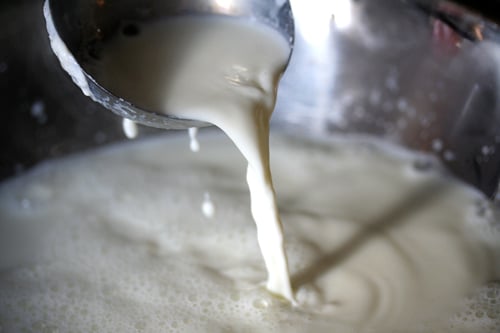
Recently I saw a new milk being advertised, and I was interested in trying it. It’s called lait d’ici (‘milk from here’, in friendly small-case lettering) and is touted as milk that is collected from producers who are located not farther than 330 kilometers (205 miles) from the point of sale, to reduce l’empreinte carbone. The package, however, didn’t note if the producers were small-scale or industrial. But the site has chirping birds and happy cow logos, so I’ll assume the best.
Plus I liked the snappy packaging, so I picked up a carton. I don’t drink that much milk and mostly use it in my morning café au lait and in baking and ice cream-making. And I never buy sterilized (UHT) milk since I don’t like the idea of it. Sometimes around 1993 Parmalat tried to introduced UHT milk in America, sold in shelf-stable, aseptic boxes, and it was a big flop. I think we Americans are just used to buying fresh, icy-cold cartons or bottles of milk.
I’m not sure how the French, more so than almost any other European country, embraced sterilized milk so vehemently (according to the London Times, 95.5% of the milk consumed in France is UHT sterilized milk), but perhaps it could be attributed a few factors like electricity is very expensive here, French folks are rather frugal, and storage is an issue because space is at a premium, especially in a tight city like Paris.
Plus the French don’t have the same milk-gulping tradition that we Americans do and milk is often used for cooking or adding to hot coffee, where the taste isn’t quite as important. In an odd juxtaposition, most of the fromageries that I’ve been in almost invariably carry sterilized milk. (My fromagerie, which has outstanding raw-milk cheeses, curiously, sells packages of single-serving liquid coffee creamer by the register.) But it’s not quite enough to sway me as I can’t say I like the flavor of the lait stérilisé, which always tastes ‘cooked’, and just feels dead.
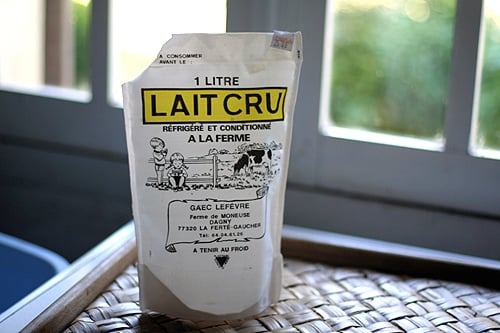
But walking back from the store where I bought the milk, I was thinking how wasteful it is to refrigerate all the milk that we do in the states. When you go into an American supermarket, there are rows upon rows of refrigerated cases as far as you can see. I can’t image what the average electricity bill is for a typical American supermarket. Perhaps the French have a point and it is more ecologically friendly to sterilize it and save on all the refrigerated trucks used for transport and heavily chilled refrigerators lining the aisles in supermarkets.
Another thing that appeals are the square boxes they use as packaging. It’s nearly impossible to find milk that isn’t sold in plastic bottles in France, which seems odd to me because square or rectangular containers take up a lot less space when packed in cases and on store shelves. So maybe we can chalk another one up for these shelf-stable boxes of milk?
I’m not sure of the concept behind round plastic bottles for milk and was happy to once find fresh milk sold in square cartons in the supermarket. Unfortunately when I returned the next time I needed milk, the grocery store no longer carried it and I couldn’t find it anywhere else in my neighborhood. It’s possible that they carry it in at another store in another neighborhood, somewhere around here, but it’s hard to justify spending a few hours tracking down something. (Although I’ve done worse.)
I did try the Bernard Gaborit fresh organic milk which I bought at the natural foods store. Yes, it was packed in plastic, but it was much thinner plastic than normal and I was happy to pay the extra money for fresh, organic milk that I felt good about, with the promise of tasting ‘alive’. But when I opened the bottle and trickled some in my coffee, the texture was very odd, slightly viscous, and left an unappealing fatty glob at the bottom of my coffee bowl. Don’t get me wrong. I do like barnyard flavors in my cheese very much, but they’re a little off-putting in my morning coffee.
J’♥ le lait d’ici was just 65 centimes, half the price of the fresh milk in plastic bottles. And while I wanted to like it, I just can’t get past the idea that even though the milk has been collected from smaller producers, it’s been heated to a burnishing 275ºF (135ºC) and somehow, I can’t wrap my head around the fact that it’s better for me—and the planet, than the fresh stuff. But I could be wrong.
I’m letting this carton sit on my shelf, and will likely not use it for drinking. Perhaps I’ll cook it down to make dulce de leche. And I’m hoping that sometime down the line, they’ll come out with a fresh version of this milk.
Which will really give me something to ♥.
Related Posts
Is American Food Better Than French?
Swearing off Supermarkets (Alexander Lobrano/Hungry for Paris)
Community Supported Agriculture in Paris
French Farmers Turn Champs-Elysées Into Huge Farm (BBC)
Tips for Vegetarian Dining in Paris
Raw Milk Vending Machine (Americans in France)








